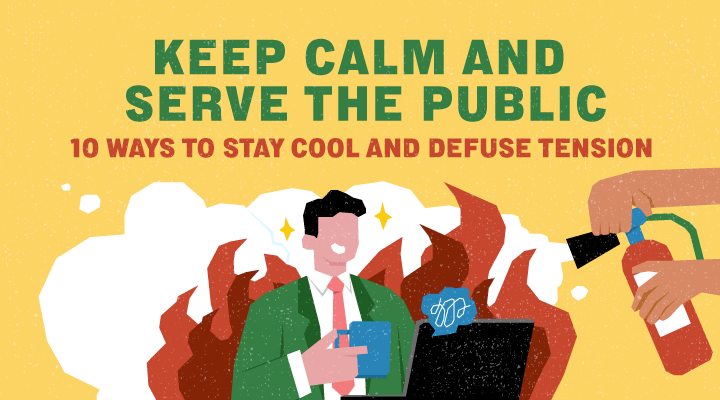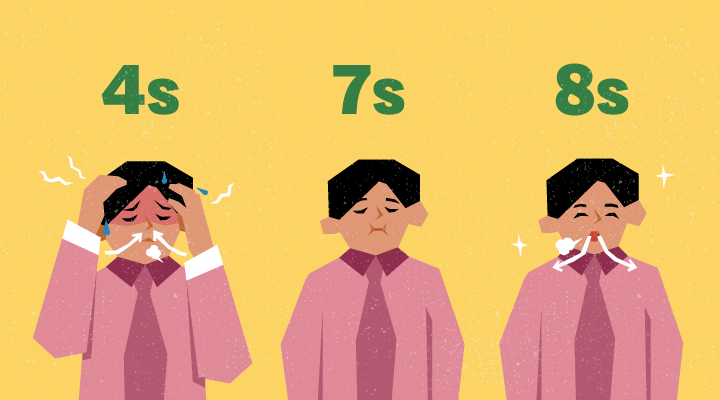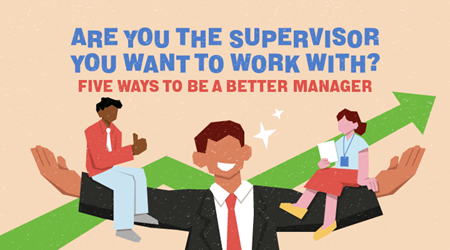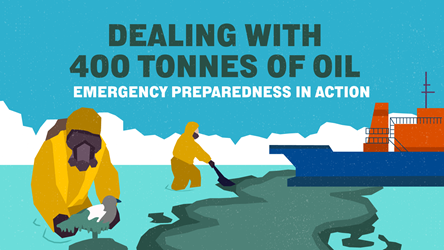Keep Calm and Serve the Public: 10 Ways to Stay Cool and Defuse Tension

4-minute read
Have you ever found yourself in emotionally charged situations while carrying out your duties?
As public officers, our interactions with the public often require more care and intentionality compared to other professions. This is understandable, given that our work directly impacts the daily lives of citizens, and many of these interactions involve addressing deeply personal concerns.
Even for non-front-facing public officers, collaborating with multiple internal and external stakeholders can present challenges, requiring skilful navigation of disagreements and differing perspectives.
Serving the public with professionalism and composure is central to the ethos of being a public officer. Here are ten tips to help you remain calm and composed while managing emotionally charged situations.
First, here are some tips to stay cool as a cucumber.

#1 Use the 4-7-8 breathing method
Getting worked up involves a physiological response to an upsetting situation—think face turning red, faster pulse rate, increasing blood pressure. Breathing techniques help to regulate your body in heated situations! Here’s a proven method to help your pulse back to normal: Inhale for four counts, hold for seven counts, and exhale for eight counts. Repeat.
This calms your body and reduce anxiety. You can practise this while the other person is talking. Pause briefly before responding so that you have time to compose a calm reply.

#2 Employ grounding techniques
Grounding techniques are exactly that—feel the ground beneath your feet. Focus on the physical sensation of standing, sitting down, or hands on the desk. Use the 5-4-3-2-1 technique: identify five things you can see, four you can touch, three you can hear, two you can smell, and one you can taste.
This method engages your senses and ground you in the present. Such practices not only help to lower heart rate, but also creates a mental reset, helping you to avoid reactive responses.
#3 Take a short break
Trapped in an emotionally charged meeting? Request a short break for everyone and for yourself to reset. Stepping away also helps you to step back from the situation and focus on the problem and solution instead of the dynamics. Clear your mind, recharge, and come back with a calmer resolve.
#4 Use positive self-talk
Silent, positive affirmations can help you remain composed. In your mind, repeat encouraging phrases such as “Be calm”, “This will pass”, “You’ve got this”. Remind yourself of past successes in managing similar situations to boost your confidence and maintain perspective.
#5 Visualise a positive outcome
When overwhelmed, take a moment to imagine the interaction ending successfully. Visualising a calm resolution can help you regulate your emotions and build confidence in your ability to manage the situation effectively.
And here are tips on defusing tension in a challenging interaction:

#1 Adopt a Solution-Oriented Mindset
Placing your focus on finding a resolution can be empowering and allows you to manage the dynamics better. Avoid laying blame, pointing out inconsistencies in the other person’s speech, or dwelling on the other person’s anger. Rather, stay calm and work on finding a way forward.
#2 Show empathy
It’s natural for humans to be frustrated when they feel their needs are unmet. Acknowledge their emotions and express your willingness to help find a solution. This can help defuse tension. Phrases like, “I understand that you’re upset. Let me see how I can help,” demonstrate empathy and professionalism, fostering trust in your ability to resolve their concerns.

#3 Keep your body language neutral
Tension is often communicated through body language. Be aware of your posture and gestures when the situation gets tense. Ask yourself, are you affected by the escalation? Is your body starting to convey “fight” (e.g. clenched fists) or “flight” (e.g. turning your back on the other person) cues?
To maintain a calm presence, adopt open, non-defensive postures. Avoid crossing your arms, clenching your fists, or tapping your fingers. A relaxed posture not only conveys attentiveness but also helps you stay mentally calm.
#4 Practise active listening
Feeling unheard is a big contributor to feelings of frustration and anger. By listening actively to your stakeholders, you signal that you are taking their concerns seriously.
Focus on what they are saying, filter out unnecessary details like inappropriate language, and try to distil the key points of their concerns. Nod to show your attentiveness and paraphrase key points to confirm your understanding. This helps them feel heard and calm down while allowing you to process information.
#5 Use collaborative language
Using collaborative language helps the other person feel that you are on their side. Encourage the other person to work with you on a solution instead of confrontation. Here are some phrases for consideration: “Shall we explore a solution together?”, “We can work this out.”, or “Let’s find out why this happened.”
- POSTED ON
Feb 11, 2025








